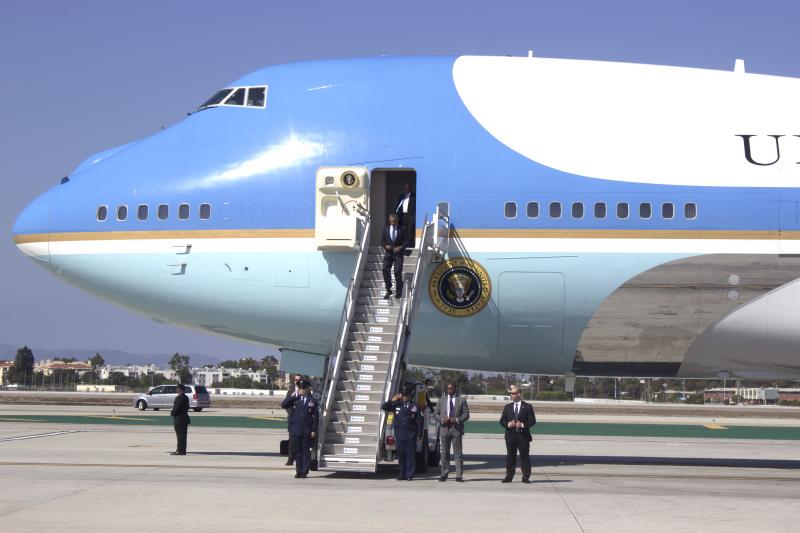Why Do L.A. Journalists Cover POTUS's Arrival?

While the events are important, who really cares about his arrival at the Los Angeles International Airport?
Journalists do.
Rain or shine, day or night, journalists are prepared to document the President’s arrival in any new city or country. This is no easy feat: Wrangled into a “press box,” which is just a small space surrounded by a fence, security and police dogs, journalists allow their cars, equipment and bodies to be searched. Then, the press stands in the box for hours, just waiting for the blue and white Air Force One plane to touch down.
On Thursday, it took the President about 40 seconds to get off the plane, salute and walk to Marine One, where he took off for his next destination.
READ MORE: President Obama's Visit Creates Another Traffic Jam
So why do journalists put themselves through a hot, sweaty and invasive process just for 40 seconds?
David Bro, a news photographer who is both a freelancer and a stringer for multiple Los Angeles outlets, photographs Obama’s arrival any time he comes to Southern California.
“(Journalists come) because he’s the leader not only our country but arguably the leader of the free world and his decisions affect not only people in the United States but people across the world every day,” said Bro. “It is important to know what he’s doing all the time.”
Bro also believes it is necessary to be at Air Force One’s landing because the President’s facial expressions or even clothing choices could give journalists information about Obama’s mood and future decisions.
News Videographer and Editor for KTLA 5 James Ramos has covered almost three sitting presidents. He explained that in order to cover the landing you must be screened, get credentials, get checked for weapons and explosives and then just wait. He sees this process as standard practice for media.
Most journalists agree that they come just in case anything were to happen.
“I hope nothing crazy happens,” he said. “We always wish the safety and well fair of not only of the President but everyone involved with the whole setup here.”
READ MORE: President Obama Departs Los Angeles
While everything will most likely go exactly as planned, you do not want to be the journalist who misses out.
“You pretty much have to be here just in case something happens,” said Frederic Brown, a AFP wire photographer who has covered both President Bush and President Obama overseas. “Generally not, but you don’t want to not be here if something happens.”
Brown explains that there is usually a routine: The President gets off the plane, usually waves and acknowledges the people there, then boards the night flight or gets in the next vehicle.
So while the arrival of yet another plane into an airport may not be the most breaking news story, journalists understand that it is part of the job to be prepared for anything—especially if it revolves around the President.
Reach Senior News Editor Rebecca Gibian here or follow her on Twitter here.



